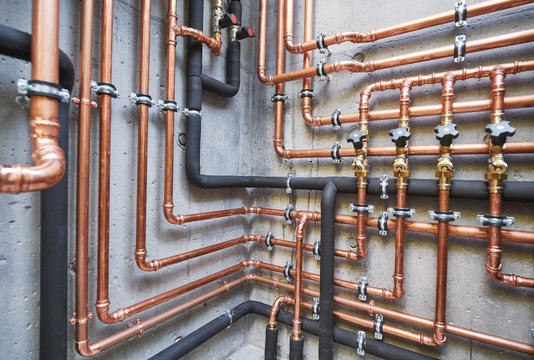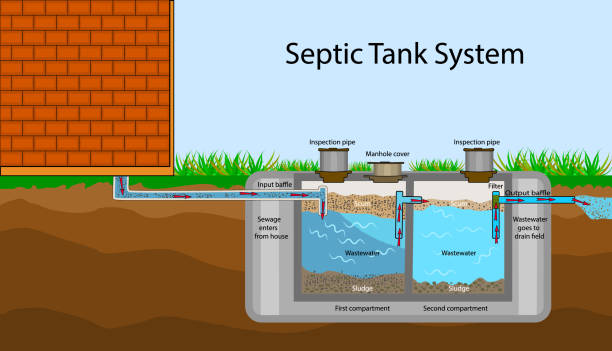Key Components of Your Home's Plumbing System
Key Components of Your Home's Plumbing System
Blog Article
What are your thoughts and feelings on Exploring Your Homes Plumbing Anatomy?

Understanding how your home's plumbing system functions is essential for every single house owner. From delivering clean water for drinking, cooking, and showering to securely getting rid of wastewater, a properly maintained plumbing system is essential for your family's health and comfort. In this extensive guide, we'll explore the elaborate network that comprises your home's pipes and deal pointers on upkeep, upgrades, and handling common issues.
Introduction
Your home's plumbing system is more than just a network of pipes; it's a complex system that ensures you have accessibility to tidy water and reliable wastewater elimination. Recognizing its parts and exactly how they collaborate can help you protect against pricey repair work and ensure everything runs efficiently.
Fundamental Parts of a Pipes System
Pipes and Tubing
At the heart of your plumbing system are the pipes and tubes that lug water throughout your home. These can be constructed from different materials such as copper, PVC, or PEX, each with its advantages in regards to toughness and cost-effectiveness.
Fixtures: Sinks, Toilets, Showers, and so on.
Components like sinks, toilets, showers, and bath tubs are where water is utilized in your home. Recognizing exactly how these fixtures attach to the plumbing system aids in identifying problems and intending upgrades.
Valves and Shut-off Factors
Valves control the circulation of water in your pipes system. Shut-off valves are essential during emergency situations or when you need to make repairs, enabling you to isolate parts of the system without interfering with water flow to the whole house.
Water System System
Main Water Line
The major water line connects your home to the metropolitan supply of water or an exclusive well. It's where water enters your home and is distributed to numerous fixtures.
Water Meter and Stress Regulator
The water meter actions your water usage, while a stress regulator makes sure that water flows at a risk-free stress throughout your home's plumbing system, protecting against damage to pipes and components.
Cold Water vs. Hot Water Lines
Recognizing the distinction in between cold water lines, which supply water directly from the primary, and hot water lines, which carry warmed water from the water heater, aids in troubleshooting and planning for upgrades.
Water drainage System
Drain Pipes Pipes and Traps
Drain pipes lug wastewater away from sinks, showers, and bathrooms to the sewage system or septic tank. Catches protect against sewer gases from entering your home and likewise catch debris that could trigger clogs.
Ventilation Pipelines
Ventilation pipelines allow air right into the drainage system, stopping suction that can slow drain and create catches to empty. Appropriate air flow is crucial for maintaining the integrity of your plumbing system.
Relevance of Proper Water Drainage
Ensuring appropriate water drainage avoids back-ups and water damage. Frequently cleansing drains and keeping catches can avoid pricey repairs and prolong the life of your pipes system.
Water Heating System
Kinds Of Hot Water Heater
Water heaters can be tankless or conventional tank-style. Tankless heating systems heat water on demand, while storage tanks store warmed water for prompt usage.
Updating Your Plumbing System
Reasons for Upgrading
Upgrading to water-efficient fixtures or replacing old pipes can boost water quality, decrease water costs, and raise the value of your home.
Modern Plumbing Technologies and Their Benefits
Discover innovations like clever leakage detectors, water-saving toilets, and energy-efficient water heaters that can conserve cash and lower environmental impact.
Expense Factors To Consider and ROI
Determine the in advance prices versus lasting savings when considering plumbing upgrades. Lots of upgrades spend for themselves with decreased utility bills and fewer repairs.
Just How Water Heaters Attach to the Pipes System
Comprehending exactly how hot water heater attach to both the cold water supply and warm water circulation lines helps in diagnosing issues like insufficient hot water or leaks.
Maintenance Tips for Water Heaters
Routinely flushing your water heater to remove sediment, checking the temperature settings, and inspecting for leaks can prolong its life expectancy and enhance energy effectiveness.
Typical Plumbing Issues
Leaks and Their Causes
Leaks can take place as a result of maturing pipelines, loosened installations, or high water pressure. Dealing with leaks promptly prevents water damage and mold and mildew development.
Obstructions and Obstructions
Clogs in drains and commodes are usually triggered by flushing non-flushable things or an accumulation of grease and hair. Making use of drain displays and bearing in mind what goes down your drains can prevent obstructions.
Indicators of Pipes Problems to Watch For
Low tide stress, sluggish drains, foul odors, or unusually high water costs are indications of prospective plumbing troubles that must be dealt with promptly.
Pipes Upkeep Tips
Regular Inspections and Checks
Set up annual plumbing examinations to capture issues early. Seek indicators of leakages, rust, or mineral buildup in taps and showerheads.
Do It Yourself Maintenance Tasks
Straightforward tasks like cleaning tap aerators, checking for toilet leakages using color tablets, or insulating revealed pipes in cool environments can protect against major pipes issues.
When to Call an Expert Plumbing Professional
Know when a plumbing problem calls for professional know-how. Trying complex repair services without proper understanding can bring about more damage and greater repair prices.
Tips for Decreasing Water Use
Simple practices like dealing with leaks quickly, taking much shorter showers, and running complete tons of laundry and meals can save water and reduced your utility bills.
Eco-Friendly Pipes Options
Take into consideration sustainable plumbing materials like bamboo for floor covering, which is durable and eco-friendly, or recycled glass for countertops.
Emergency Preparedness
Actions to Take Throughout a Pipes Emergency
Know where your shut-off valves are located and just how to switch off the water supply in case of a burst pipe or significant leakage.
Relevance of Having Emergency Situation Contacts Useful
Keep get in touch with details for neighborhood plumbers or emergency services readily available for quick action throughout a pipes crisis.
Environmental Impact and Conservation
Water-Saving Fixtures and Home Appliances
Setting up low-flow faucets, showerheads, and bathrooms can substantially minimize water use without giving up efficiency.
Do It Yourself Emergency Situation Fixes (When Relevant).
Short-lived repairs like utilizing duct tape to patch a leaking pipe or placing a pail under a trickling tap can reduce damages till a specialist plumbing professional gets here.
Verdict.
Comprehending the composition of your home's plumbing system empowers you to maintain it successfully, saving money and time on repair services. By adhering to normal upkeep regimens and remaining educated concerning contemporary plumbing technologies, you can ensure your pipes system runs effectively for many years to come.
HOW YOUR PLUMBING SYSTEM WORKS
Which Pipes Do What?
Blue lines = fresh water supply entering the building Red lines = hot water supply entering the building Grey lines = pipes carrying waste away from the building and venting pipes carrying gases away from the building (through the roof) YOUR MAIN PLUMBING SYSTEMS
There are two main plumbing systems that support your home s basic plumbing needs one that brings clean water into your home, and one that sends dirty water away from your home. Connected to the toilet, bath, shower, and other faucets in your home, these two systems keep your water flowing in the right directions.
ACCESSING FRESH WATER
Fresh and clean water is brought into your home through the main water supply line . Filtered through one pipe, this water is pressured to flow into the various fixtures in your home at any given time.
This water can be sourced from a well located on your property, a pond or river (mostly cottages), or, as in most cases, from the city s municipal water treatment centre. However, it is important to note that water that is untreated, such as the water siphoned from ponds or rivers, may not be safe to drink. Personal water supplies always need to be treated for hardness and contaminants before consumed.
MUNICIPAL WATER SUPPLIES
Improve taste and odour Remove sediment Eliminate hardness Reduce chlorine COLD WATER SUPPLY VS. HOT WATER SUPPLY
Cold water flows into your home or building through the service line, which then distributes hot or cold water to your fixtures. This line is most commonly run through a central column that runs floor to floor. Hot water runs in short and straight pipes as the longer the pipeline, the more heat that will be lost in the transfer. Having shorter pipes also allows residents to access hot water more quickly.
WASTE WATER SYSTEM
Your wastewater system is divided into two parts pipes that send wastewater away from your home and venting pipes that send sewer gas away from your home. Sewage water travels through pipes that flush the water and waste towards local sewers that are operated and managed by your city or town. Most sewer systems rely on gravity to move the wastewater to where it needs to go.
The further away from your toilet or sink, the larger wastewater pipes become. This allows for waste to be disposed of from various parts of your home or business at once without pipe blockages. The angle and flow of these pipes are also essential for keeping your waste pipes clear of build up.
https://harrisplumbing.ca/how-your-home-plumbing-system-works/

We hope you enjoyed reading our article about Exploring Your Homes Plumbing Anatomy. Thank you for taking the time to read our content. Feel free to pause to distribute this blog post if you appreciated it. Thanks a lot for being here. Come back soon.
Click Here! Report this page